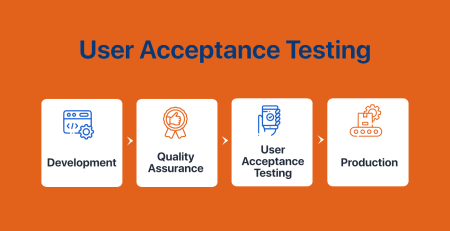Top 5 JavaScript Testing Frameworks: Ensuring Code Quality
Web applications are frequently created with the dynamic and flexible programming language known as JavaScript. Making sure your codebase is reliable and maintainable becomes more crucial as it expands. JavaScript testing frameworks can be useful in this situation. These tools enable you to automate code testing, find errors quickly, and make sure your application performs as planned. We’ll examine the best 5 JavaScript testing frameworks in this post to provide you peace of mind and high-quality code.
1.Jasmine
Popular JavaScript testing framework Jasmine is renowned for its clarity and readability. It is popular among developers for use in behavior-driven development (BDD) because of its clear syntax and extensive set of testing options. We’ll examine Jasmine in more detail in this post, as well as some of its most useful attributes and test-writing strategies for JavaScript apps.
Getting Started with Jasmine
Installation
To get started with Jasmine, you’ll need to install it in your project. You can do this using npm or yarn:
npm install jasmine --save-dev # or yarn add jasmine --dev
Setting Up a Test Environment
Once Jasmine is installed, you need to set up a test environment. Jasmine provides a command-line tool called jasmine-init to help you create the necessary project structure. Here’s how you can use it:
npx jasmine init
This command will create a spec directory for your test files and a jasmine.json configuration file.
Writing Your First Test
After setting up the test environment, you may begin writing your first test. Because Jasmine’s syntax is created to read like normal English, it is simple to comprehend. Here is an illustration of a basic test using Jasmine:
describe('Math operations', () => {
it('should add two numbers correctly', () => {
const result = add(2, 3);
expect(result).toBe(5);
});
it('should subtract two numbers correctly', () => {
const result = subtract(5, 3);
expect(result).toBe(2);
});
});In the example above:
- We use the
describefunction to define a test suite that groups related tests. - Inside the suite, we use the
itfunction to define individual test cases. - Within the test cases, we perform actions and make assertions using Jasmine’s
expectfunction.
Key Features of Jasmine
Clear and Readable Syntax
Jasmine’s syntax is intended to be expressive and readable by humans. This makes it simple for developers to design tests that anybody can understand, even if they weren’t the ones who initially wrote them.
Matchers
Jasmine provides a wide range of built-in matchers that allow you to make assertions about your code’s behavior. Some common matchers include toBe, toEqual, toContain, and toThrow, among others.
Spies
Jasmine includes a powerful feature called “spies” that allows you to mock functions and track their behavior during testing. This is particularly useful for testing code that interacts with external services or dependencies.
Before and After Hooks
Jasmine provides beforeEach, afterEach, beforeAll, and afterAll hooks that allow you to set up and tear down test fixtures and data, ensuring that your tests run consistently.
Mocking Timers
Jasmine allows you to control and mock timers (such as setTimeout and setInterval) in your tests, making it easier to test asynchronous code.
Integrations and Extensibility
Jasmine may be expanded upon and integrated with other libraries and tools while being a stand-alone testing framework. For instance, you may use Jasmine with a testing framework like Protractor for end-to-end testing or with libraries like Karma for browser testing.
Writing and maintaining tests for your apps is made easier by the robust and user-friendly JavaScript testing framework Jasmine. It is an excellent option for both novice and seasoned developers because to its concise and expressive syntax, large selection of matchers, and features like spies and hooks. You may improve the dependability and quality of your JavaScript code, find errors quickly, and make sure that your apps function as intended by integrating Jasmine into your testing process.
2.Mocha
Mocha is a versatile and widely-used JavaScript testing framework that provides developers with the tools needed to write robust and maintainable tests for their applications. Whether you’re working on a small project or a large-scale application, Mocha can streamline your testing process and help you catch bugs before they become issues for your users. In this article, we’ll dive into Mocha, explore its key features, and demonstrate how to get started with it.
Getting Started with Mocha
Installation
To begin using Mocha, you’ll need to install it as a development dependency in your project. You can do this using npm or yarn:
npm install mocha --save-dev # or yarn add mocha --dev
Writing Your First Test
Once Mocha is installed, you can start writing your first test. Mocha provides a clean and flexible syntax for structuring your tests. Here’s a basic example of a Mocha test:
describe('Math operations', function () {
it('should add two numbers correctly', function () {
const result = add(2, 3);
assert.strictEqual(result, 5);
});
it('should subtract two numbers correctly', function () {
const result = subtract(5, 3);
assert.strictEqual(result, 2);
});
});In the example above:
- We use the
describefunction to group related tests. - Inside the suite, we use the
itfunction to define individual test cases. - Within the test cases, we perform actions and make assertions using Node.js’ built-in
assertmodule.
Key Features of Mocha
Test Runner and Framework Agnostic
Mocha is a test runner, which means it can be used with various assertion libraries like Chai or even Node.js’ built-in assert. This flexibility allows you to choose the assertion style and library that suits your preferences and project requirements.
Async Testing
Mocha provides excellent support for testing asynchronous code. You can use callback functions, Promises, or async/await syntax to handle asynchronous operations in your tests.
it('should perform an async operation', async function () {
const result = await performAsyncOperation();
assert.strictEqual(result, expectedValue);
});Hooks
Mocha offers before, after, beforeEach, and afterEach hooks, allowing you to set up and tear down test fixtures, databases, or other resources as needed before and after test suites and cases.
before(function () {
// Set up resources before all tests in this suite
});
after(function () {
// Clean up resources after all tests in this suite
});Browser and CLI Support
Mocha can be used in both browser and command-line environments. Additionally, it offers a wide range of reporters for generating test output in various formats.
Third-party Plugins and Extensions
Because Mocha is extensible, developers may combine it with third-party plugins and extensions for extra features like code coverage reporting and test mocking.
Mocha is a strong and adaptable JavaScript testing framework that can accommodate various testing requirements. It is a well-liked option among developers because to its compatibility with many assertion libraries, support for asynchronous testing, and rich hook system.
You can assure code quality, find and repair problems early in the development process, and provide your users with dependable and stable products by integrating Mocha into your development workflow. Mocha may be a useful tool for managing and enhancing your codebase whether you’re doing a tiny personal project or a huge commercial application.
3.Jest
Jest is a popular JavaScript testing framework developed by Facebook. It’s widely used in the JavaScript community for writing unit tests, integration tests, and end-to-end tests. Known for its simplicity and versatility, Jest offers a comprehensive toolset that simplifies the testing process. In this article, we’ll explore Jest, its key features, and how to get started with it.
Getting Started with Jest
Installation
To start using Jest in your project, you can install it as a development dependency using npm or yarn:
npm install jest --save-dev # or yarn add jest --dev
Jest comes bundled with everything you need, including an assertion library and a test runner, so you don’t need to worry about installing additional dependencies.
Writing Your First Test
After installing Jest, you can begin writing tests right away. Jest uses a simple and expressive syntax that makes it easy to create and understand test cases. Here’s a basic example of a Jest test:
// math.js
function add(a, b) {
return a + b;
}
// math.test.js
const { add } = require('./math');
test('should add two numbers correctly', () => {
const result = add(2, 3);
expect(result).toBe(5);
});In this example:
- We define a simple
addfunction inmath.js. - In
math.test.js, we import theaddfunction and write a test using Jest’stestfunction. - Within the test, we use
expectto make assertions about the function’s behavior.
Jest provides a rich set of matchers like toBe, toEqual, toContain, and more for making precise assertions.
Key Features of Jest
Built-in Mocking
Jest includes built-in mocking capabilities that make it easy to simulate the behavior of external dependencies, APIs, and modules. This is particularly useful for isolating the code you want to test.
jest.mock('axios');
test('fetches data from an API', async () => {
axios.get.mockResolvedValue({ data: 'some data' });
const result = await fetchDataFromApi();
expect(result).toBe('some data');
});Snapshot Testing
Snapshot testing allows you to capture the output of a component or function and compare it to a stored reference snapshot. Jest can automatically generate and update snapshots, helping you catch unexpected changes in your code.
Asynchronous Testing
Jest handles asynchronous code easily, supporting Promises, async/await, and callbacks. It also provides utilities like async/await support in test cases and a done callback for handling asynchronous operations.
test('async test', async () => {
const data = await fetchData();
expect(data).toEqual(someExpectedData);
});Zero-config Setup
Jest offers a “zero-config” setup, meaning it works out of the box with sensible defaults. You don’t need complex configuration files to start writing tests.
Test Runner and Parallel Execution
Jest performs the role of a test runner, running your tests concurrently. This greatly speeds up your test suite, especially for big projects.
Developers may streamline the testing process with Jest, a robust and user-friendly JavaScript testing framework. It is a flexible option for testing JavaScript applications because to its built-in mocking, snapshot testing, and support for asynchronous programming.
You can assure code quality, find and repair problems early, and give your users dependable and stable apps by integrating Jest into your development workflow. Jest may assist you in maintaining and enhancing your codebase while developing trust in the behavior of your code, whether you’re working on a small project or a large-scale application.
4.Cypress
Cypress is an open-source end-to-end testing framework for web applications, especially suited for JavaScript-heavy single-page applications (SPAs). It has gained immense popularity in recent years due to its developer-friendly features and robust testing capabilities. In this article, we’ll explore Cypress, its key features, and how to leverage it for effective testing of your JavaScript applications.
Getting Started with Cypress
Installation
You can install Cypress as a development dependency in your project using npm or yarn:
npm install cypress --save-dev # or yarn add cypress --dev
Once installed, you can set up Cypress by running the following command:
npx cypress open
This will create the necessary project structure and open the Cypress Test Runner, where you can write and run your tests.
Writing Your First Test
Cypress tests are written in JavaScript, and the framework provides an intuitive API for interacting with your application. Here’s a basic example of a Cypress test:
// cypress/integration/sample.spec.js
describe('Sample Test', () => {
it('Visits the Cypress website', () => {
cy.visit('https://www.cypress.io');
cy.contains('end-to-end').click();
cy.url().should('include', '/end-to-end');
});
});In this example:
- We visit the Cypress website.
- We find an element containing the text ‘end-to-end’ and click it.
- Finally, we assert that the URL includes ‘/end-to-end’.
Key Features of Cypress
Real-time Interactive Testing
One of the standout features of Cypress is its real-time interactive testing. As you write and run tests, you can see your application’s state and interact with it within the Cypress Test Runner. This feature greatly simplifies debugging and test authoring.
Automatic Waiting
Cypress automatically waits for elements to become available before interacting with them. This eliminates the need for explicit waits and timeouts, making your tests more reliable and faster.
Easy Debugging
Cypress provides a user-friendly debugging experience. You can set breakpoints, use the DevTools console, and view detailed command logs to diagnose and troubleshoot issues in your tests.
Time Travel Debugging
Cypress offers a time-traveling feature, allowing you to see what happened in your application at different points during the test execution. This makes it easier to identify and understand failures.
Built-in Spies, Stubs, and Clocks
Cypress comes with built-in utilities for spying on functions, stubbing network requests, and controlling timers. This makes it simple to test edge cases and interactions with external services.
Comprehensive Documentation and Community Support
Cypress has a thriving community and significant documentation. Common testing problems have answers, examples, and tutorials available, making it simpler to get started and get past obstacles.
End-to-end testing for JavaScript apps has been revolutionized by Cypress, which gives developers an effective and straightforward solution for assuring the quality of their work. It is a noteworthy option for testing contemporary web applications due to its real-time interactive testing, automated waiting, and debugging capabilities.
Your JavaScript applications’ dependability and stability may be guaranteed by integrating Cypress into your development process. Cypress can assist you in catching defects early, delivering high-quality software, and offering a smooth user experience for your clients whether you’re developing single-page applications, progressive web apps, or conventional websites.
5.Karma
Karma is not just another JavaScript testing framework; it’s a test runner that focuses on executing tests across multiple browsers and environments. By allowing you to run your tests in real browsers and headless browsers, Karma helps ensure the compatibility and reliability of your JavaScript code. In this article, we’ll explore Karma, its key features, and how to use it for cross-browser testing of your JavaScript applications.
Getting Started with Karma
Installation
You can install Karma globally or locally within your project, depending on your preference. It’s common to install it locally as a development dependency:
npm install karma --save-dev # or yarn add karma --dev
Additionally, you’ll need a test framework (e.g., Jasmine, Mocha, or Jest) and a browser launcher (e.g., Chrome, Firefox) as plugins. Install them as well:
npm install karma-jasmine karma-chrome-launcher --save-dev # or yarn add karma-jasmine karma-chrome-launcher --dev
Configuration
Karma uses a configuration file, typically named karma.conf.js, to define settings and specify which browsers to use for testing. Here’s a minimal configuration for Karma with Jasmine:
module.exports = function(config) {
config.set({
frameworks: ['jasmine'],
browsers: ['Chrome'],
files: [
'src/**/*.js', // Your source code files
'test/**/*.spec.js' // Your test files
]
});
};Running Tests
With Karma configured, you can run your tests using the command:
npx karma start
Karma will launch the specified browsers and execute your tests, providing real-time feedback in the terminal.
Key Features of Karma
Cross-Browser Testing
Karma’s primary strength is its ability to run tests in various real browsers, making it invaluable for cross-browser testing. You can test your code against popular browsers like Chrome, Firefox, Safari, and Internet Explorer, ensuring compatibility with a wide range of user environments.
Extensive Plugin Ecosystem
Karma’s plugin ecosystem allows you to extend its functionality. You can add plugins for code coverage reporting, continuous integration (CI) support, and custom browser launchers to tailor Karma to your specific needs.
Parallel Test Execution
Karma can execute your tests in parallel, significantly speeding up test execution, especially for large codebases with many tests.
Continuous Integration (CI) Support
Karma is well-suited for CI environments. You can easily integrate it with popular CI services like Travis CI, Jenkins, and CircleCI to automate testing and ensure code quality throughout your development workflow.
Real-time Feedback
Karma provides real-time feedback on test results, making it easy to identify failing tests and diagnose issues quickly. It displays test results in the terminal and updates them as tests run.
Framework Agnostic
Depending on the needs of your project, you may use Karma with a variety of testing frameworks, including Jasmine, Mocha, and QUnit.
When it comes to cross-browser compatibility and actual browser testing, Karma is a potent tool for JavaScript testing. You may improve user experience and reduce compatibility concerns by integrating Karma into your development workflow to make sure that your JavaScript code works consistently across various browsers and settings.
Building web applications, progressive web apps, or intricate JavaScript libraries? Karma may assist you in identifying and fixing problems early in the development process, resulting in more dependable and durable software.
Conclusion
In conclusion, the choice of a JavaScript testing framework or test runner depends on your specific project requirements and testing needs. Jasmine, Mocha, Jest, Cypress, and Karma each offer unique features and advantages that cater to different aspects of the testing process. Jasmine’s clean syntax and BDD approach make it accessible for beginners, while Mocha’s flexibility and framework-agnostic nature appeal to those seeking customization. Jest simplifies testing with its zero-config setup and built-in mocking, making it particularly well-suited for React applications. Cypress excels in end-to-end testing, offering real-time interactive testing and automatic waiting. Meanwhile, Karma shines in cross-browser testing, ensuring your JavaScript code functions seamlessly across various browsers and environments.
In the end, the testing tool you select should be in line with the objectives of your project and the preferences of your team. Regardless of the framework or test runner you use, integrating testing into your development workflow is crucial for upholding code quality, spotting and correcting problems early on, and providing consumers with dependable and high-quality JavaScript apps. The correct testing tool may speed up your software development process, increase your trust in your code, and assist you in producing a more reliable and resilient software product.













Leave a Reply